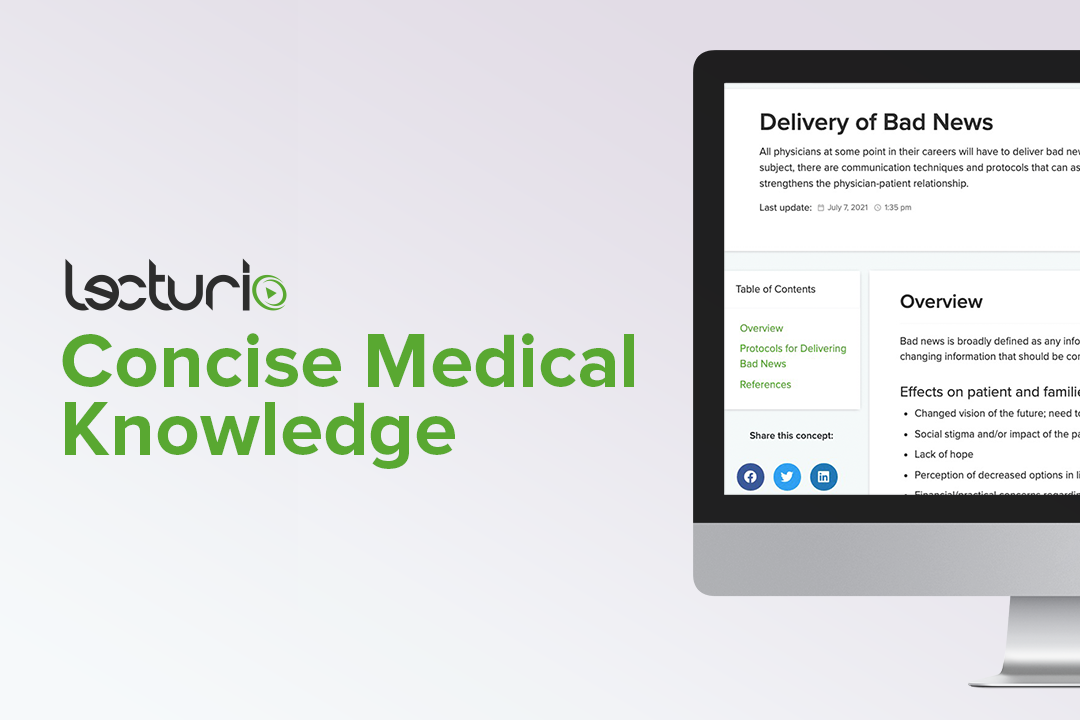Playlist
Show Playlist
Hide Playlist
Strategy and Summary – How to Break News
-
Slides Strategy and Summary How to Break News.pdf
-
Download Lecture Overview
00:01 The last step in SPIKES is going to be the S, the Strategy and summary. 00:07 So maybe you've given this information, you've helped them process the information. 00:13 You might need to then talk about a treatment plan, you know, what are you going to do in relation to this information. 00:18 But before you move to a treatment plan or suggestions or recommendations for what to do next, you need to check in with patient, are they ready to talk about their goals of care based on this news? Do they have any lingering uncertainties or fears that you need to sort of walk through and talk through first, before you get to a strategy? Toward the end of the encounter, there's going to be an opportunity to sort of provide a summary of the topics that you've been discussing during the meeting. 00:48 Some people will say, you might be good for the patient to give that summary. 00:52 Maybe if they're so emotionally overwhelmed, they're not going to be able to give that summary. 00:57 And maybe it's the job of the clinician to give that summary. 01:00 So, in some way, just making sure that they've understood the information, and how it relates to now what you're going to talk about in terms of strategizing. 01:12 When you do the strategy, these should be, you know, patient centered goals, in light of hopes, fears, and what's important to the patient. 01:20 We're going to have another lecture on goals of care discussions. 01:24 But the news is one thing, what you do with the news, establishing patient centered goals is the next thing. 01:32 So you're going to recommend a care plan based on what you've learned about the patient and what their goals are. 01:39 Then you're going to try to figure out how to close the meeting with them. 01:43 Figure out what the agreed upon step, next steps are going to be. 01:47 I'm going to send you to a specialist. 01:49 I'm going to send you for additional test. 01:51 We're going to institute this therapy, whatever it is, you're going to sort of set the stage for this as the agreed upon next steps and what we're going to do after the encounter. 02:03 So might be I'd like to suggest that we, you know, whatever it is for the treatment plan. 02:10 There may also need to be the opportunity for very tangible goals for the patients. 02:15 So how are you going to leave the encounter? If it's like an outpatient encounter in the ambulatory setting? How's the patient going to get home? Are they going to be okay to drive home? Do they need to take a break? Maybe give it something to eat, so they can sort of sit down and be with the information for a little bit before they go home? How are they going to talk, if the family members were not present during the encounter? How are they going to share this information with their loved ones. 02:42 So helping them with those kinds of strategies is also important in this the summary stage of the SPIKES encounter. 02:50 So all of those things, again, are an opportunity to show compassion for the patient in how this information is affecting them, showing respect for them, and then figuring out the beneficence the best interest for them and then going forward with a treatment plan.
About the Lecture
The lecture Strategy and Summary – How to Break News by Mark Hughes, MD, MA is from the course Breaking Serious News and Advance Care Planning.
Included Quiz Questions
What strategies would be appropriate after giving serious news? Select all that apply.
- Patient-centric strategy
- Strategy with a focus on the patient's hopes
- Strategy with a focus on the patient's fears
- Strategy to de-emphasize the patient
- Strategy to focus on the patient's siblings
Customer reviews
5,0 of 5 stars
| 5 Stars |
|
5 |
| 4 Stars |
|
0 |
| 3 Stars |
|
0 |
| 2 Stars |
|
0 |
| 1 Star |
|
0 |




